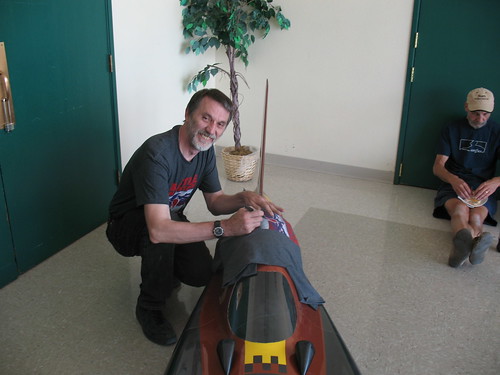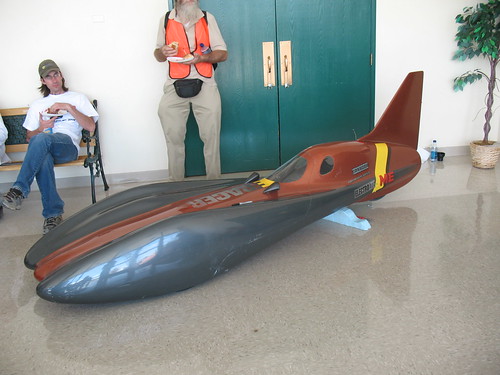recumpence
1 GW
The typical riding I do is pedalling to mantain 20mph on the flats, then use the motor for accelleration and for hills (I live in a hilly area). If I run the motor ONLY, I can get 13wh per mile if I really nurse it. If I just crank the throttle and average maybe 25mph or so and not worry at all about efficiency, I normally see 18 to 21wh per mile. Now, if I pedal on the flats, but throttle hard whenever I feel like it (bashing around like I am riding a motorcycle), I almost always see 15 to 17wh per mile.
That is really the way I like to ride. I like to not worry about my efficiency, but still pedal alot for exercise. If I do that, I can be sloppy with the throttle and still get good efficiency (of course, that is not what this thread is about).
Bill, I would love to see you try one of my drives. I expect to have my materials this week (they'd better be here this week! ).
).
The drive can be setup for huge power handling, up to 5kw, or for efficiency. The most efficient setup would be a single stage using a 9mm wide belt. The lease efficient setup would be a 15mm wide primary belt run tight with a chain second stage. That is what I am running on my recumbent. It is setup for high power and 40mph top speed.
Matt
That is really the way I like to ride. I like to not worry about my efficiency, but still pedal alot for exercise. If I do that, I can be sloppy with the throttle and still get good efficiency (of course, that is not what this thread is about).
Bill, I would love to see you try one of my drives. I expect to have my materials this week (they'd better be here this week!
The drive can be setup for huge power handling, up to 5kw, or for efficiency. The most efficient setup would be a single stage using a 9mm wide belt. The lease efficient setup would be a 15mm wide primary belt run tight with a chain second stage. That is what I am running on my recumbent. It is setup for high power and 40mph top speed.
Matt



